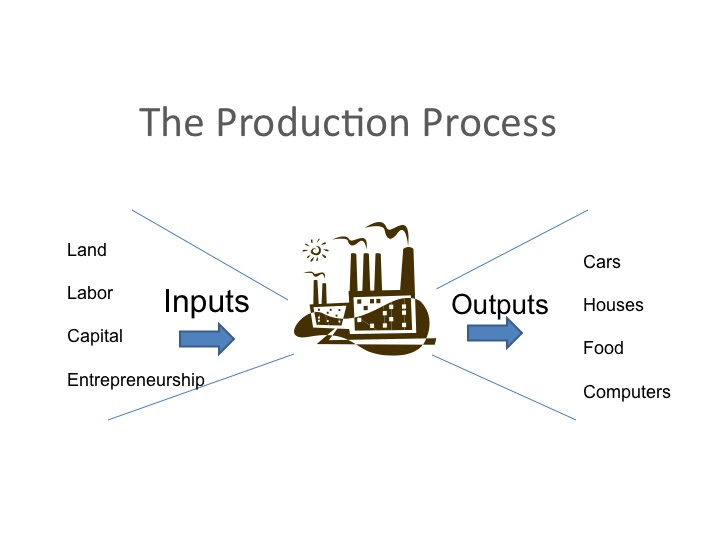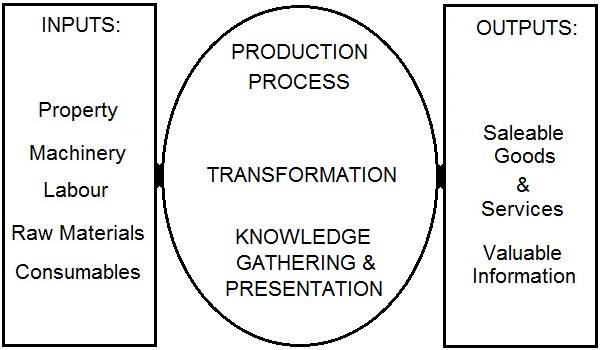

#Production processes definition series
Typically a series of meetings takes place for co-ordination and planning. Shut-downs of complicated processes may take weeks or months of planning. These include installing new equipment in the main process flow or tying-in or making provisions to tie-in sub-processes or equipment that can be installed while the process is operating. In addition to performing maintenance, shut downs are also when process modifications are performed. By the early 20th century continuous processes were common. Processes began to operate continuously during the 19th century. 1785), which was fully automated.Įarly chemical production and oil refining was done in batches until process control was sufficiently developed to allow remote control and automation for continuous processing. Īnother early continuous processes was Oliver Evans'es flour mill (ca. The paper machine influenced other continuous processes such as the continuous rolling of iron and later steel. Previously paper had been made in individual sheets. It produced a continuous web of paper that was formed, pressed, dried and reeled up in a roll. The Fourdrinier paper machine, patented in 1799, was one of the earliest of the Industrial Revolution era continuous manufacturing processes. The Cromford mill of 1771, designed by Richard Arkwright, was the first factory to use a continuous process from raw material to finished product in a series of operations. Many truly continuous processes of today were originally batch operations.

Semi-continuous processes, such as machine manufacturing of cigarettes, were called "continuous" when they appeared. The blast furnace is intermittently charged with ore, fuel and flux and intermittently tapped for molten pig iron and slag however, the chemical reaction of reducing the iron and silicon and later oxidizing the silicon is continuous. The oldest continuous flow processes is the blast furnace for producing pig iron. These can be operated for one or two shifts if necessary. Many processes such as assembly lines and light manufacturing that can be easily shut down and restarted are today considered semi-continuous. Typically a start up or shut down will take several hours.Ĭontinuous processes use process control to automate and control operational variables such as flow rates, tank levels, pressures, temperatures and machine speeds. In the more complex operations there are sequential shut down and start up procedures that must be carefully followed in order to protect personnel and equipment. Also, cycling temperatures and pressures from starting up and shutting down certain processes (line kilns, boilers, blast furnaces, pressure vessels, etc.) may cause metal fatigue or other wear from pressure or thermal cycling.
#Production processes definition full
Many tanks, vessels and pipes cannot be left full of materials because of unwanted chemical reactions, settling of suspended materials or crystallization or hardening of materials. Shutting down and starting up many continuous processes typically results in off quality product that must be reprocessed or disposed of. Most of these industries are very capital intensive and the management is therefore very concerned about lost operating time. Processes are operated continuously for practical as well as economic reasons. Production workers in continuous production commonly work in rotating shifts. Rotary kilns for calcining lime or cement.pickling lines tandem rolling mills electrolytic tinning and galvanizing lines Some common continuous processes are the following: Common processes Continuous production line for making spaghetti Blast furnaces can run from four to ten years without stopping. Some chemical plants can operate for more than one to two years without a shutdown. Continuous processing is contrasted with batch production.Ĭontinuous usually means operating 24 hours per day, seven days per week with infrequent maintenance shutdowns, such as semi-annual or annual.

Continuous production is called a continuous process or a continuous flow process because the materials, either dry bulk or fluids that are being processed are continuously in motion, undergoing chemical reactions or subject to mechanical or heat treatment. Continuous production is a flow production method used to manufacture, produce, or process materials without interruption.


 0 kommentar(er)
0 kommentar(er)
